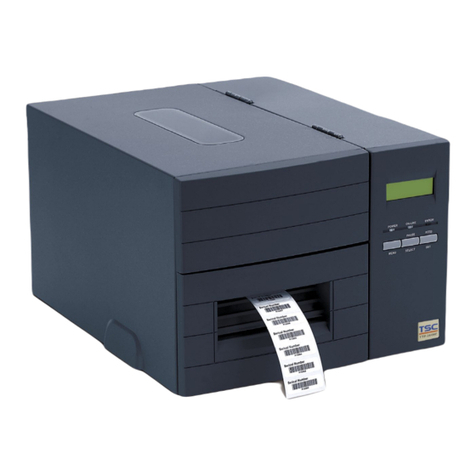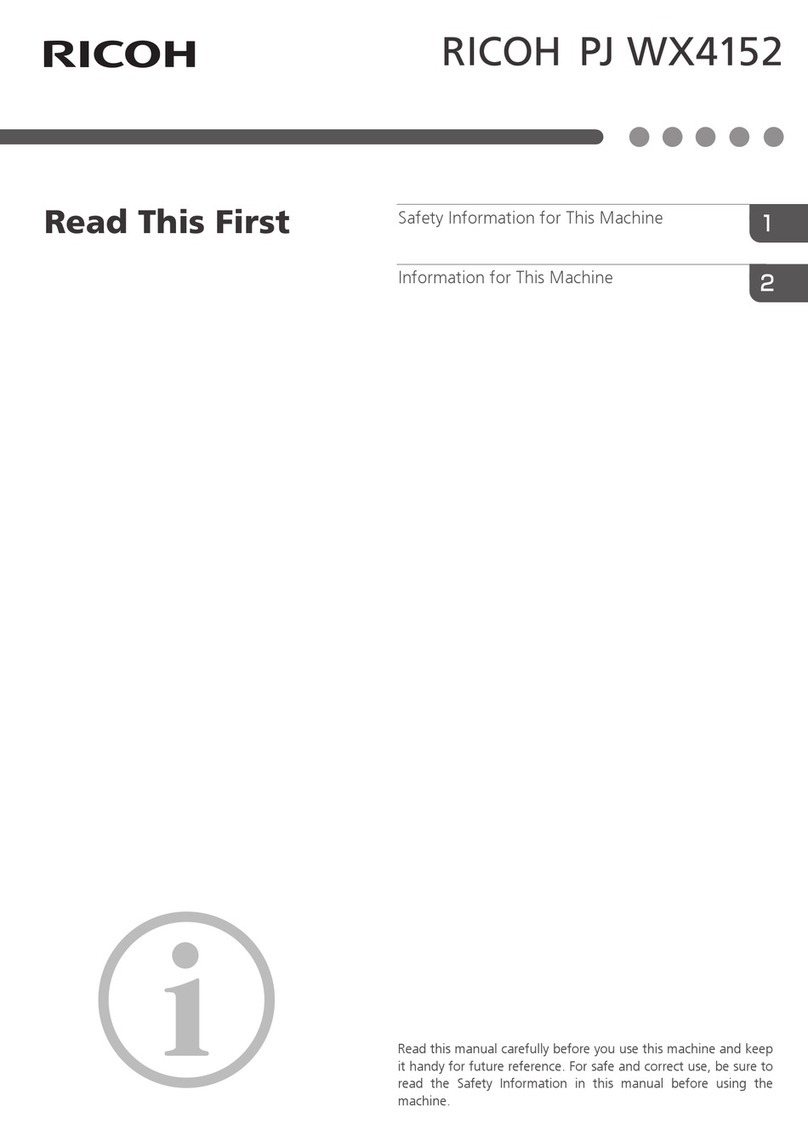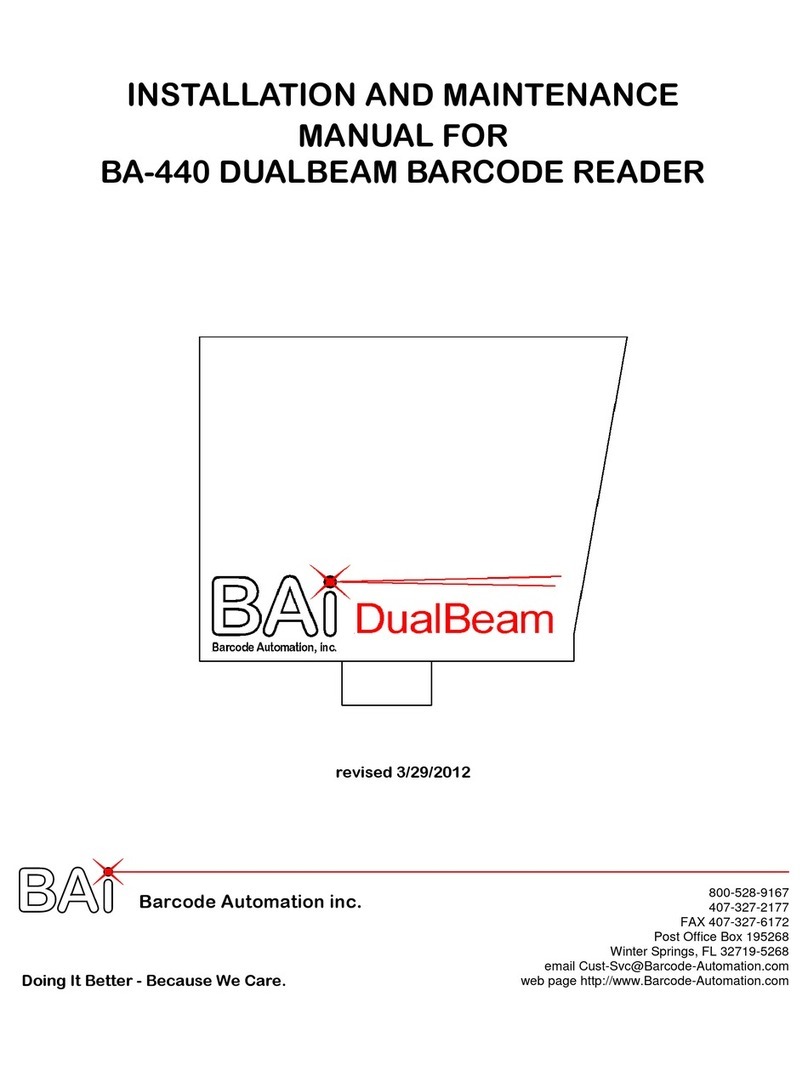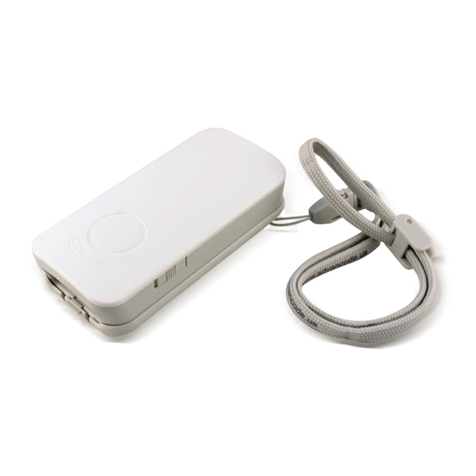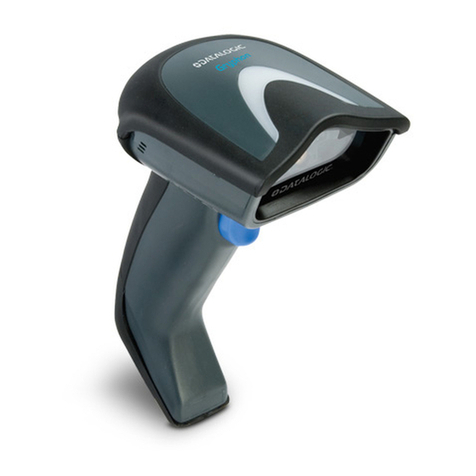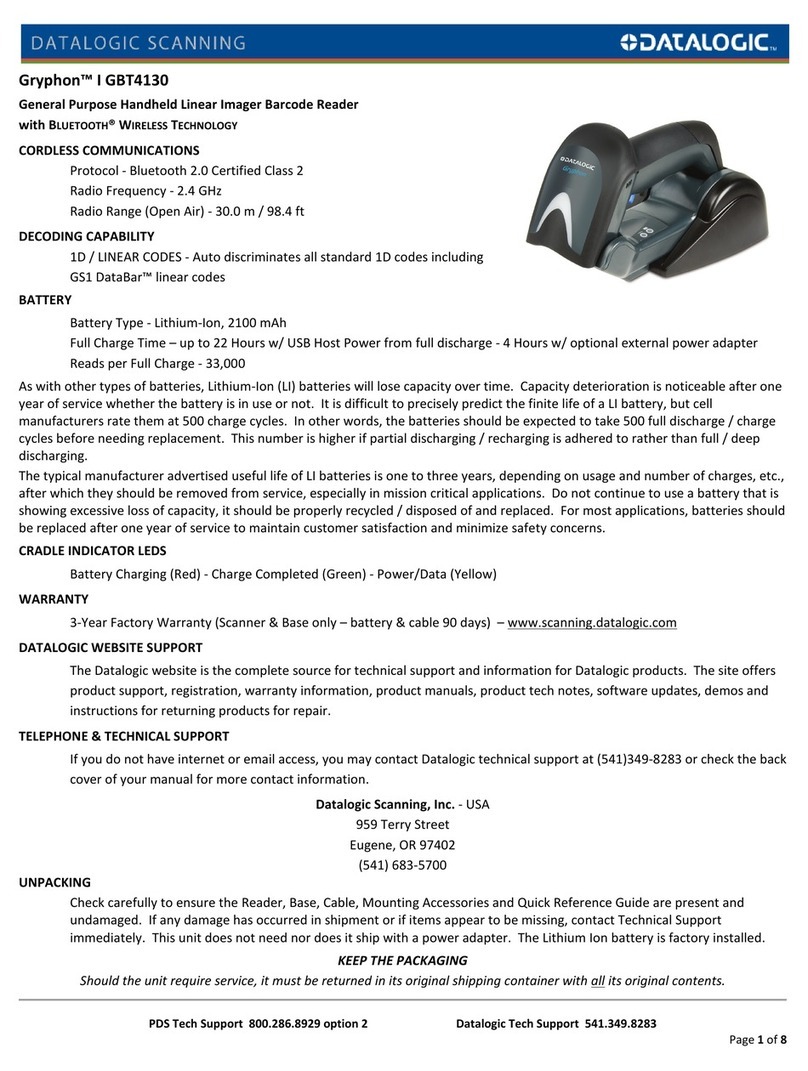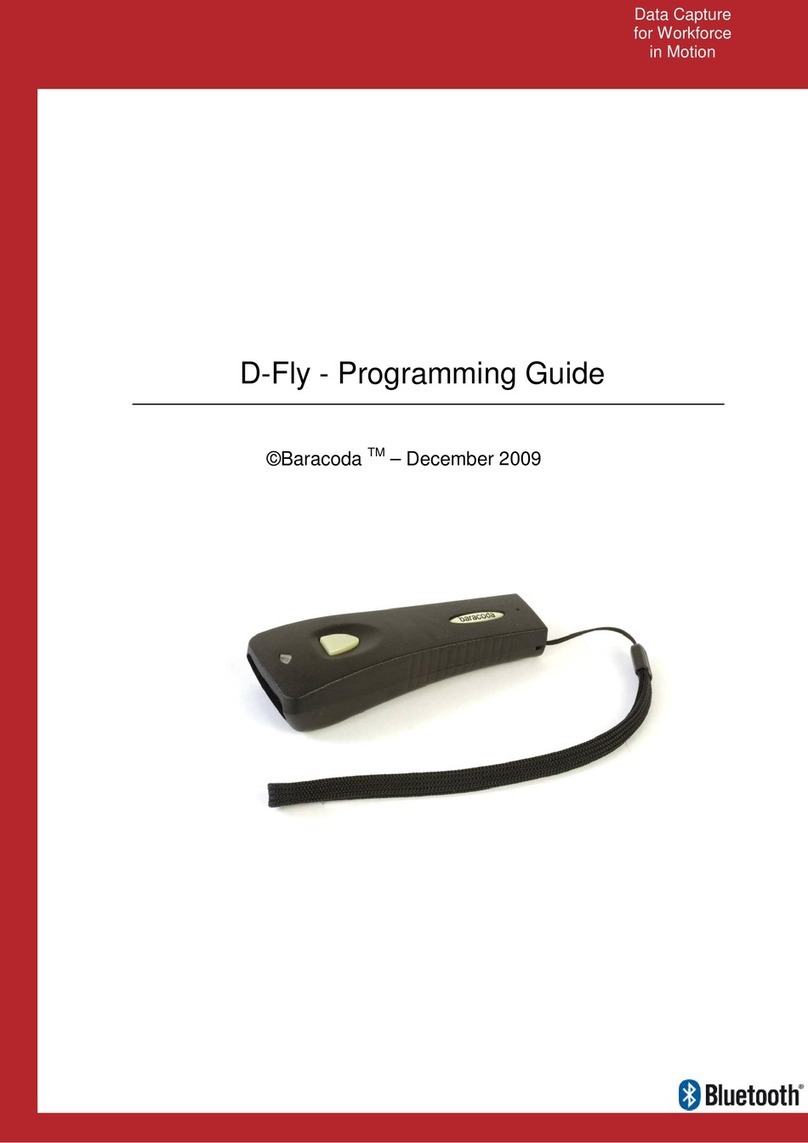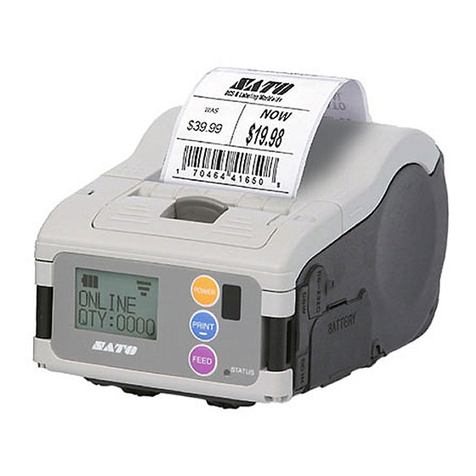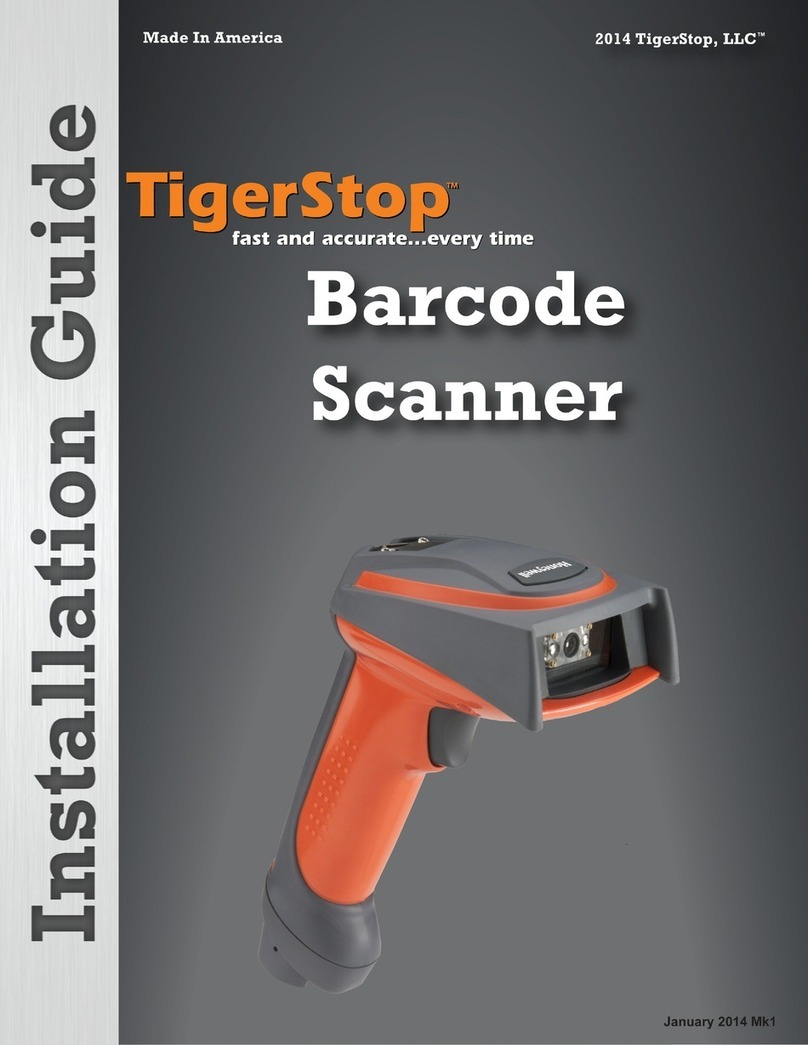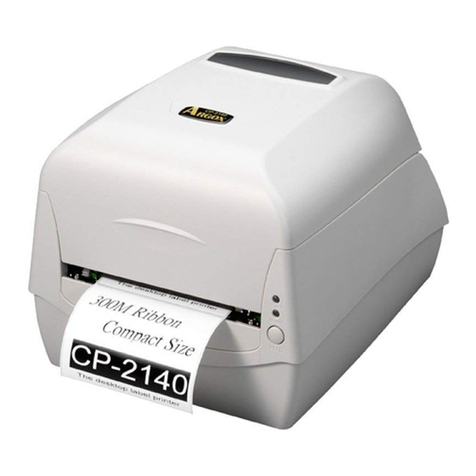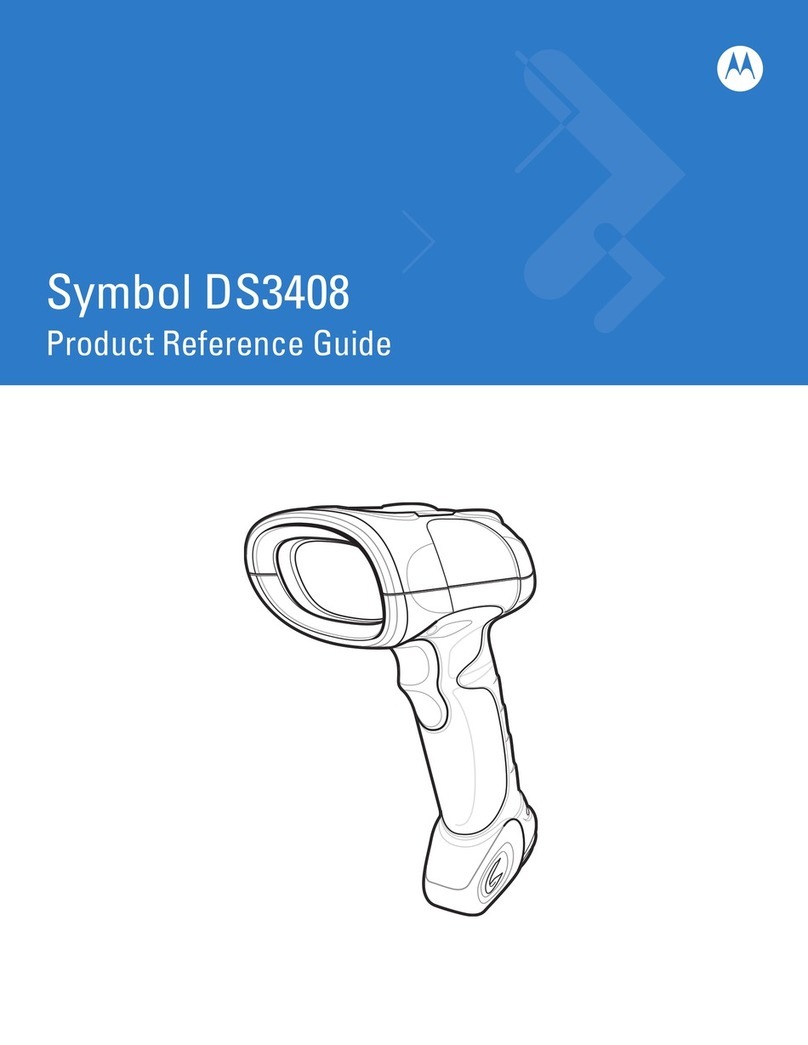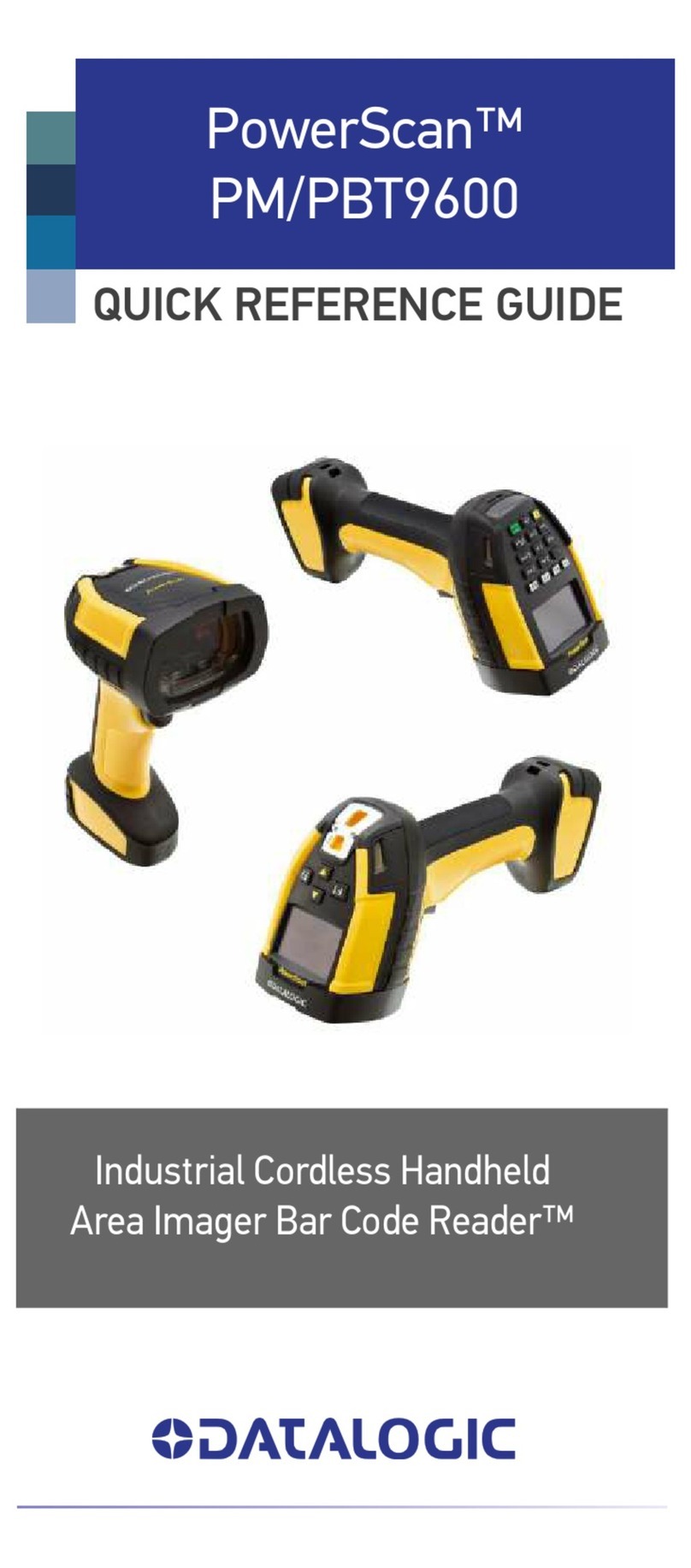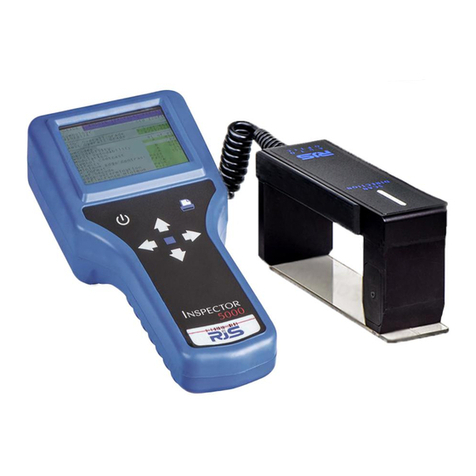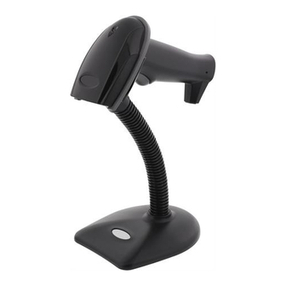Sekonic SR-430 User manual

Operating manual
C43497510-00
OPTICAL
MARK READER
OPTICAL
MARK READER
SR-430
SR-430
Operating manual
Head Office : 7-24-14, Oizumi-Gakuen-cho, Nerima-ku, Tokyo 178-8686, Japan
Telephone : (03)3978-2335 Fax : (03)3978-5229

Introduction
Thank you very much for purchasing our product.
Before using this product, be sure to thoroughly read this manual so that you can use it properly.
Notice
Microsoft Visual Basic is a registered trademark of Microsoft Corporation.
This product must not be reproduced or modified without permission from SEKONIC.
Introduction

6. CD-ROM

Warranty
This product will be warranted without any charge for one year after delivery.
In case of a failure occurring during this period, we repair it for free if it is judged to be related to our
responsibility. In this case, we temporarily keep the failed product to repair it. For details, contact the
shop at which you have purchased it.
In case that the free warranty period has expired or the failure is related to your responsibility or has
resulted from a worn part, we will repair it with charge.
The scope of this warranty is limited to this product and its accessories. Note that SEKONIC will not be
responsible for any financial damage, lost profit or claim from a third party resulting from operation of
this product.
Warranty

Safety Precautions
This "Safety Precautions" page lists various symbols for ensuring safety operation of this product so as to
prevent users, other people or properties from being damaged.
Thoroughly read these precautions and understand the meanings of the symbols before proceeding to the
main text of this manual.
Warning
Improper operation by neglecting this instruction may result in death or serious
injury.
Caution
Improper operation by neglecting this instruction may result in personal or property
damage.
Safety Precautions
Instructs that the part must be grounded for safety operation.
Neglecting this instruction may generate smoke or a fire.
Neglecting this instruction may cause an electric shock.
Indicates a prohibited action.
Indicates that disassembly or modification is prohibited.
Instructs that the power code must be removed from the outlet for safety opera-
tion.

Warning
●A fire or an electric shock may result if this product continues to be used with
strange smell or sound.
In this case, immediately turn the power switch off and then remove the power
code from the outlet. After making sure that smoke generation has stopped,
ask the sales shop for repair.
Never attempt to repair by yourself since it may cause serious danger.
●If a foreign matter should enter inside, immediately turn the power switch off
and remove the power code from the outlet. Then, contact the sales shop.
If the device continues to be used with a foreign matter inside, a fire or an
electric shock may occur.
If water or other foreign matter should enter inside, immediately turn the power
switch off and remove the power code from the outlet. Then, contact the sales
shop. If the device continues to be used with water or other foreign matter
inside, a fire or an electric shock may occur.
●If the device should be dropped or the cover broken, immediately turn the power
switch off and remove the power code from the outlet. Then, contact the sales
shop.
●Do not cover the vent hole. Otherwise, heat is contained inside, resulting in a
fire.
●Precautions on device
•Do not use it with other supply voltage than the specified one.
•Do not install it in a place subject to liquid like water or oil, steam, moisture or
dust.
•Do not insert or drop any metal, foreign matter like combustibles, etc from the
port.
•Do not place a container with chemicals or water or a small metal piece near
the device.
●Do not modify or disassemble this device. Otherwise, it may cause a fire or an
electric shock.
●Do not remove the cover from this device. Otherwise, it may cause an electric
shock. Ask the sales shop for internal check, adjustment or repair.
Pay enough attention to the above instructions. Otherwise, a fire or an electric
shock may occur.
Warning

Caution
●When connecting or disconnecting the ground cable, be sure to remove the
power code from the outlet. Otherwise, an electric shock may occur.
●Be sure to ground the main unit with a ground cable. Otherwise, an electric
shock may occur.
●Do not place the device in an unstable location. Otherwise, it may fall, resulting
in an injury.
●When opening or closing the upper part of the main unit, do not place your hand
on the paper feeding surface. Otherwise, the finger may be caught, resulting in
an injury.
●When placing your hand on the paper feeding surface of the main unit, be
careful not to allow your finger to be caught or hit.
●When maintaining the device, be sure to remove the power code from the outlet
for your safety.
●When the device is not in use for long periods, remove the power code from the
outlet for safety.
●Before moving the device, be sure to remove the power code from the outlet.
If the cable is damaged, a fire or an electric shock may result.
●Do not connect or disconnect the power code or connection plug with a wet
hand.
Otherwise, a fire or an electric shock may result.
●Do not put a heavy substance on the device.
Otherwise, it may fall, resulting in an injury.
Caution

Table of Contents
1. Precautions on Usage ......................................................................................................... 1
2. Names of Each Part ........................................................................................................... 2
3. Specifications ..................................................................................................................... 5
4. Installing the USB Driver .................................................................................................. 6
4-A Before installation ..................................................................................................... 6
4-B Installation Procedure ................................................................................................ 7
4-C Checking the Assigned port .................................................................................... 10
4-D Troubleshooting for Communication Errors ........................................................... 11
4-E Uninstall Procedure ................................................................................................. 12
5. Operation ......................................................................................................................... 13
5-A Preparation .............................................................................................................. 13
5-B Functions and Operating Method of Operation Panel ............................................. 14
5-C Setting Cards ........................................................................................................... 15
5-D Power Connection and Operation Test .................................................................... 19
5-E Test Mode ................................................................................................................ 19
5-F Troubleshooting ....................................................................................................... 20
6. Connection to Computer .................................................................................................. 22
7. How to Enter Mark .......................................................................................................... 23
8. Adjusting Reading Sensitivity ......................................................................................... 24
9. Control Commands .......................................................................................................... 27
9-A Initialize Commands ............................................................................................... 27
9-B Card Feed Commands ............................................................................................. 37
9-C Device Control Setting Commands ......................................................................... 38
10. Data Transfer Mode ......................................................................................................... 39
10-A Data Transfer Commands ..................................................................................... 39
10-B A Mode (1-byte Fixed Output Command) ........................................................... 40
10-C C Mode(Fixed Length Output Command) ........................................................... 41
10-D CA Mode(Fixed Length Output Command for Automatic Density Distinction) . 42
10-E E Mode(Variable Length Output Command) ....................................................... 43
10-F EA Mode(Variable Length Output Command for Automatic Density Distinction) ... 44
10-G ED Mode(Variable Length Output Command with Density Data) ...................... 45
10-H ES Mode(Variable Length Output Command by Density and Mark Data) ......... 46
10-I G Mode(EBCDIC Code Convert and Output Command) ................................... 47
10-J B Mode ................................................................................................................. 48
10-K D Mode ................................................................................................................. 48
10-L F Mode ................................................................................................................. 48
10-M Other Commands ................................................................................................. 49
10-N SR-305 Compatible Command ............................................................................ 52
11. Cleaning and Time of change of parts ............................................................................. 53
Table of Contents

Table of Contents
12. External Views ................................................................................................................. 55
13. Appendix ......................................................................................................................... 56
13-A Reference for card creation .................................................................................. 56
13-B Code Tables .......................................................................................................... 62
13-C Typical sample program ....................................................................................... 64
13-D Check card ............................................................................................................ 67

-1-
1. Precautions on Usage
Handle the device with the following in mind so as to enable the functions of it to be fully utilized.
(1) Before usage, make sure that the power connector is firmly connected to an outlet. Avoid connecting
or disconnecting the connector during operation or while the power switch is turned on.
(It may result in a failure.)
(2) Since the card reading part is equipped with an optical lens, never insert a screwdriver or the like.
(Otherwise, reading may be disabled.)
If card feeding is disabled due to clogged dust or the like in the card feeder, open the top cover to
remove it. (Refer to "11. Cleaning".)
(3) Allow an interval of at least 5 seconds between turning the power switch on and off.
(Otherwise, a failure may result.)
(4) Be sure to ground the device so as to prevent noise or static electricity from damaging the device.
Also, do not touch the metallic part of the device during card feeding operation.
If the device is used without being grounded or the metallic part is touched, malfunction or an elec-
tric shock may result.
(5) Do not place the device in a place subject to direct sunlight or near a heater. Also be careful not to
allow sudden temperature change, moisture, dust or excessive shock around the device.
(Otherwise, a failure like wrong paper feeding, reading or operation may occur.)
(6) When the device is not in use for long periods, insert the paper feeding roller protection card between
the paper feeding roller and the separation pad to prevent the roller material from deteriorating.
(7) If the paper feeding roller becomes soiled with powder from card paper or pencil, the roller and the
card may slip.
In order to prevent it, clean the paper feeding roller at proper intervals. (Refer to "11. Cleaning".)
(8) If the exterior of the device is soiled, slightly wipes with soft cloth wetted with water or neutral
detergent. Note that wiping with cloth wetted with volatile chemicals like benzine or thinner may
cause deforming or decoloring.
1.Precautions on Usage

-2-
2. Names of Each Part
2.Names of Each Part
TEST LED (yellow)
Power switch
READY LED (green)
POWER LED (orange)
Total counter
RS-232C
Fuse holder
Power connector
Power code
Ground terminal (reserved)
ERROR LED (red)
Clear switch
Feed switch
USB

-3-
2.Names of Each Part
Side guard Card stopper
Stacker
Guide lock lever
Top cover
Side guide
Guide wire
Lock lever

-4-
2.Names of Each Part
Rotary switch (SW2)
Rotary switch (SW3)
Rotary switch (SW1)
DIP switch (DIPSW)
Card detection sensor Separation pad Paper feeding roller

-5-
3. Specifications
1. Available cards Card size: Standard-sized card, postcard-sized card, long-sized card
Paper type: OCR paper.
Paper ream weight: (70)* 90kg to 135kg
(basic weight: (83.8g/m2) 104.7g/m2to 157.0g/m2)
(thickness: (0.11mm) 0.13mm to 0.19mm)
The 70kg paper is available to standard size only.
2. Mark line number Standard-sized card: Data = 12 lines, timing = 1 line
Postcard-sized card: Data = 15 lines, timing = 1 line
3. Mark column 140 columns max. (specified by program)
4. Reading method Direct-under type, timing control type, mark-to-mark type
5. Marking Near-infrared light specifications: Pencil mark (HB), OCR marker
[infrared visible light specifications: The above + ball-point pen]
6. Reading wavelength: Near-infrared light specifications: 940nm
[infrared visible light specifications: 660nm]
7. Card feeding rate Approx. 256 sheets/min (AC 115V/50Hz, machine feeding rate using
standard-sized cards at room temperature)
8. Hopper capacity 200 sheets max. (paper of ream weight of 110kg (basis weight of 127.9g/
m2), standard-sized card)
9. Error check Four types of errors can be judged (jam, timing mark, card empty and
double-feeding errors)
10. Self-check The card detection sensor is to be checked.
11. Serial Interface Serial EIA RS-232C-based, asynchronous, half-duplex,
data transfer rate = 2,400 to 38,400bps (variable)
variable data format
12. USB interface USB 2.0 full-speed
Virtual COM Port Device
(same specification as 11.Serial interface)
13. Power supply Supply voltage = AC 115V, Frequency = 60Hz
Current = Approx. 0.6A (during motor rotation)
Approx. 0.1A (in standby mode)
Supply voltage = AC 220V, Frequency = 50/60Hz
Current = Approx. 0.3A (during motor rotation)
Approx. 0.1A (in standby mode)
14. Operating environments Room temperature = 5 to 35C˚
Relative humidity = 40 to 80% RH (no dew condensation)
15. Overall dimensions 360 (L) x 222 (W) x 171 (H) (mm)
(Length in operation: 695 mm)
16. Weight Main unit = Approx. 6kg
[ ] is option
3.Specifications

-6-
4.Installing the USB Driver
4-A Before Installation
To use a USB interface connection, load the supplied CD-ROM, and install the driver by following
the installation procedure in this chapter.
Be sure to install the USB driver before inserting the SR-430 into the computer's USB port. The
driver cannot be installed properly if the SR-430 is inserted into the USB port first.
Notes
• If you accidentally connect the SR-430 before performing the installation, delete the falsely-
identified driver from "Add or Remove Programs".
• To install the driver, you must log in as a user with administrator privileges.
Operating Environment
*1 Professional Edition SP4 or later
*2 Home/Professional Edition SP2 or later
*3 Home Basic/Home Premium/Business/Ultimate
*4 • The OS must be preinstalled.
• The software may not work for certain computer models and configurations.
• Operation is not guaranteed for systems with an upgraded OS, add-on USB interface, self-
built computers, built-to-order computers, and in emulator environments (such as VirtualPC).
• Operation is not guaranteed for connections that pass through a USB hub.
• A drive capable of reading CD-ROMs is required for installing the software.
4. Installing the USB Driver
The USB driver must be installed to use this product over a USB interface connection. If using this
product over a RS-232C connection, the driver does not need to be installed, and the procedures in this
chapter are not necessary.
erawtfoSrevirdBSU
SO
1*0002swodniW
2*PXswodniW
3*atsiVswodniW
CP 4*noitarugifnocdradnatsniecafretniBSUhtiwretupmoC

-7-
4-B Installation Procedure (*The screens in the explanations below use Windows XP.)
(1) Check that the SR-430 is not connected.
(2) Start Windows, load the "driver CD", and run the installer program "sr430usbInstaller.exe" on
the CD.
4.Installing the USB Driver
(3) Click the "Install" button.
(4) Click "Continue Anyway". After installation is completed, the program will ask you to restart
the computer for certain environments. Click "Yes" to restart the computer.
Double click

-8-
4.Installing the USB Driver
(5) After the computer is restarted, turn on the power for the SR-430, and connect it to the computer's
USB port.
(6) The Found New Hardware Wizard is started.
In response to "Can Windows connect to Windows Update to search for software", select "No,
not this time".
(7) In response to "What do you want the wizard to do", select "Install from a list or specific loca-
tion (Advanced)".
1) Turn on
the power 2) Connect to the PC
using a USB cable

-9-
4.Installing the USB Driver
(8) Select "Search for the best driver in these locations", insert a check mark for "Include this
location in the search", and click the Browse button and select the "C:\Program Files\SEKONIC
\SR-430" folder.
(9) Click "Continue Anyway".
(10) Click "Finish" to complete the installation.
2) Add check mark
3) Select the folder
1) Select

-10-
4.Installing the USB Driver
4-C Checking the Assigned Port
The COM port must be designated when using this software. After installing the USB driver, follow
the procedure below to check the port number assigned when using the USB interface.
(1) Right-click My Computer on the Desktop to open a pop-up menu, and click Properties.
1) Select
2) Click
(2) Select the "Hardware" tab, and click the Device Manager.
(3) Click Ports, and check the assigned port in parentheses for the "SR-430" entry.

-11-
4-D Troubleshooting for Communication Errors
-1 Changing the Assigned Port
The assigned port can be changed if the port number assigned to the SR-430 cannot be recognized by
the software or when you want to use a specific port. The procedure for changing the port is de-
scribed below.
(1) Right-click the "SR-430" entry from the Device Manager screen (see section 4-C), and then
click Properties from the pop-up menu.
4.Installing the USB Driver
1) Select
2) Click
2) Click
1) Right click
1) Select the port
(2) Select the "Port Settings" tab, and then click Advanced.
(3) At "COM Port Number", select the port number that you want to change to.
Table of contents
Other Sekonic Barcode Reader manuals

